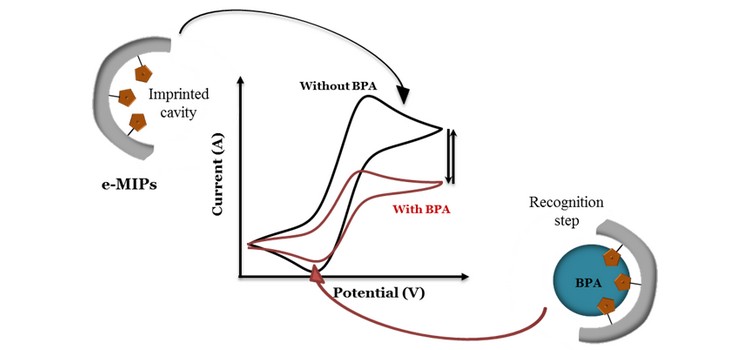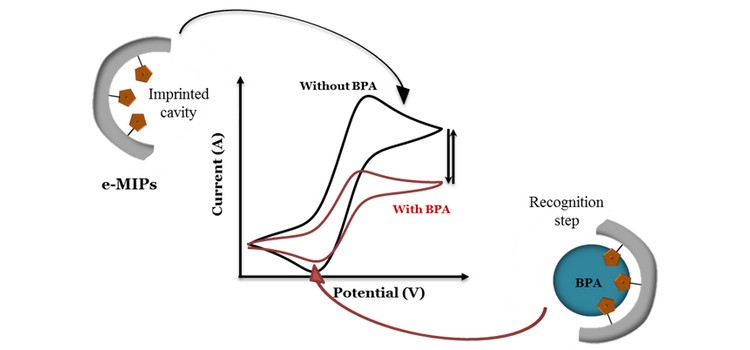From electrochemical molecularly imprinted polymer to sensor: feasibility study for the detection of Bisphenol A
Supervisor: BRANGER Catherine
Co-supervisor: BRISSET Hugues
Abstract:
Molecularly imprinted polymers are materials with specific recognition properties that can be used for the detection of a wide range of template. In recent years, many works have been reported on their use in sensors because of their capability to specifically bind a defined analyte.
The aim of this work is to assign to the molecularly imprinted polymers redox properties in order to detect Bisphenol A (BPA) by using easy electrochemical techniques. These electroactive polymers are synthesized by precipitation polymerization of ferrocenylmethyl methacrylate (Fc) and ethylene glycol dimethacrylate (EDMA) in the presence of BPA for the imprinted polymer (e-MIP-Fc) and in its absence for the non-imprinted polymer (e-NIP-Fc). The copolymerization of the previous monomer with 4-vinylpyridine (4-VP) leads to two other imprinted (e-MIP-Fc-VP) and non-imprinted (e-NIP-Fc-VP) polymers. The resulting polymers are characterized in batch using LC-MS and have ability to recognize BPA with an imprinting factor of 2.5 and 1.3 respectively for e-MIP-Fc-VP and e-MIP-Fc the proving the recognition efficiency of these polymers. Their cyclic voltammetry recording confirm first, the good integration of the redox ferrocenyl monomer inside the polymers e-MIP/e-NIP during the polymerization, and on the other hand, the capability of these polymers to reveal the presence of BPA in the solution. The e-MIP-Fc particles were then integrated inside devices like microelectrode and OECT (Organic Electro Chemical Transistor). The first results, even if they must be confirmed, are positive regarding the modification of the electrical properties of these devices in the presence of BPA. The e-MIP-Fc-VP particles, after mixing with a carbon paste, were screen-printed to obtain a modified working electrode in a screen-printed electrode device. This electrode enable the recognition of BPA with limits of detection and quantification of 60 pM and 190 pM respectively, for a concentration range between 0.15 and 1.84 nM, thus opening up interesting perspectives for the detection of BPA in aqueous medium.
Keywords
Molecular imprinted polymer, electrochemical sensor, Bisphenol A, Transistors, Screen-Printed electrodes, cyclic voltammetry.



